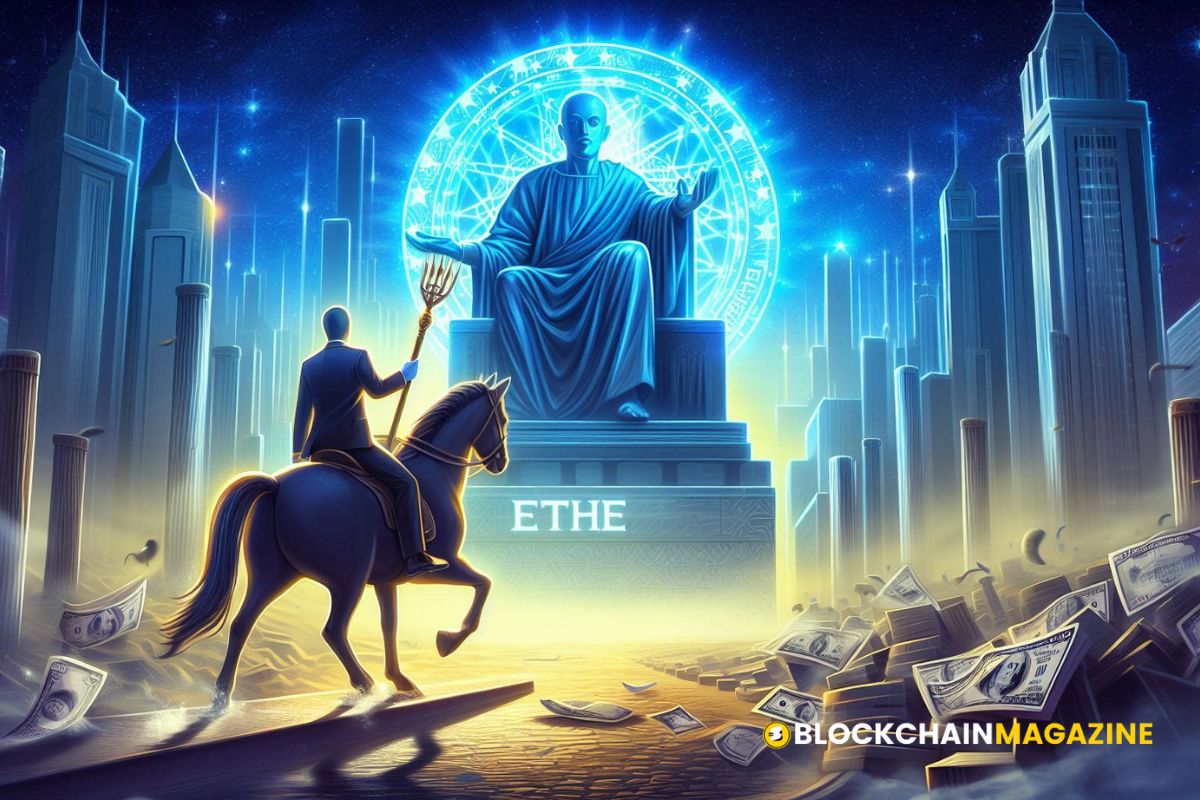Understanding Crypto Bubbles: Are We in One Right Now?
Over the past decade, the crypto market has seen incredible growth and adoption, with its total value growing from almost nothing to over $3 trillion at its peak in late 2021. However, this rapid rise has also brought about periods of extreme volatility and hype-driven bubbles. In this article, we will explore what crypto bubbles are, what causes them, some of the most significant bubbles we’ve seen, and whether we might be in one right now.
Key Takeaways
- Crypto bubbles occur when the prices of digital assets rise rapidly beyond their actual worth, mainly due to hype and speculation.
- Key drivers behind crypto bubbles include speculation, market psychology, FOMO (fear of missing out), and the regulatory environment.
- Historical examples of crypto bubbles include the 2013 Bitcoin bubble, the 2017 ICO boom, and the 2021 NFT craze.
- Current market indicators and expert opinions are divided on whether we are in a crypto bubble right now.
- To navigate crypto bubbles, it’s essential to use risk management techniques, diversify your portfolio, and recognize early warning signs.
What Defines a Crypto Bubble?
Characteristics of a Crypto Bubble
A cryptocurrency bubble happens when the prices of crypto assets rise quickly and far beyond their actual value. This surge is often driven by excitement and speculation. Here are some key traits:
- Rapid Price Increase: Prices soar in a short time.
- Speculation: Many buy in hopes of quick profits.
- Media Hype: News and social media amplify the buzz.
- FOMO: Fear of missing out drives more people to invest.
- Lack of Fundamentals: Prices rise without real value backing them.
Historical Context of Financial Bubbles
Financial bubbles are not new. They have occurred throughout history, often with devastating effects. Some famous examples include:
- Tulip Mania (1637): Tulip prices in the Netherlands soared and then crashed.
- Dot-com Bubble (2000): Internet stocks skyrocketed before plummeting.
- Housing Bubble (2008): Real estate prices inflated and then collapsed.
These events show that bubbles can happen in any market, not just crypto.
Crypto Market vs Traditional Market Bubbles
While traditional bubbles often involve physical assets or stocks, crypto bubbles are unique. Cryptocurrencies usually lack tangible assets or revenue streams, making their valuation highly speculative. This makes them more prone to rapid price swings and market sentiment shifts.
Understanding the nature of crypto bubbles helps investors navigate the volatile landscape of digital currencies. Recognizing the signs early can prevent significant losses.
Key Drivers Behind Crypto Bubbles
Speculation and Hype
Speculation is a major force behind the rise of crypto bubbles. Many investors buy cryptocurrencies not because they believe in their real value, but because they hope to sell them later at a higher price. This speculative behavior can drive prices up quickly. Media hype also plays a big role. Stories about people becoming rich overnight can make more people want to invest, pushing prices even higher.
Market Psychology and FOMO
Fear of Missing Out, or FOMO, is another key driver. When people see others making money, they don’t want to miss out. This fear can make them buy into the market at high prices. Herd mentality, where people follow what others are doing without doing their own research, can also make the bubble grow.
Regulatory Environment and Its Impact
The lack of clear rules can make it easy for bad actors to manipulate the market. This can lead to quick price jumps that are not sustainable. On the other hand, sudden government actions can make prices drop just as fast. The recent anticipation of the SEC’s ETF decision is a good example of how regulation can impact the market.
Understanding these drivers can help you make better decisions and avoid getting caught in a bubble. Always do your own research and be cautious of hype and speculation.
Historical Examples of Crypto Bubbles
The 2013 Bitcoin Bubble
In 2013, Bitcoin experienced its first major bubble. Prices skyrocketed from around $13 at the start of the year to over $1,000 by December. This surge was driven by speculation about Bitcoin’s potential to disrupt financial services. However, the bubble burst, and Bitcoin’s price plummeted back to around $200 over the next year.
The 2017 ICO Boom
The 2017 ICO boom is another infamous example. Bitcoin’s price soared to nearly $20,000 by the end of 2017, only to crash to around $3,000 within a year. This period also saw a flood of initial coin offerings (ICOs), many of which lacked tangible products or services. The hype around these ICOs led to a massive bubble, which eventually burst, causing substantial losses for investors.
The 2021 NFT Craze
In 2021, non-fungible tokens (NFTs) gained widespread attention, with some selling for millions of dollars. However, the NFT bubble burst in 2022, with trading volumes plummeting significantly. During the same period, Bitcoin also went through another bubble phase, reaching an all-time high of over $68,000 before undergoing a significant correction.
Current Market Analysis: Are We in a Crypto Bubble?
Market Indicators to Watch
To determine if we’re in a crypto bubble, we need to look at several key indicators:
- Price Volatility: Cryptocurrencies like Bitcoin and Ethereum have shown high volatility, with prices swinging wildly within short periods. This is a common sign of speculative bubbles.
- Market Capitalization: The total market cap of cryptocurrencies has seen significant fluctuations, often driven by hype and speculation.
- Trading Volume: High trading volumes can indicate increased speculative activity, which is a hallmark of bubbles.
- Investor Behavior: The presence of FOMO (fear of missing out) and speculative trading are strong indicators of a bubble.
Expert Opinions and Predictions
Experts are divided on whether we are currently in a crypto bubble. Some argue that the market has matured and is focusing more on utility and adoption rather than just price. Others believe that valuations still seem disconnected from usage and reality, suggesting that we might still be in a bubble.
Comparing Current Trends to Past Bubbles
When comparing current trends to past bubbles, several similarities and differences emerge:
- 2013 Bitcoin Bubble: Bitcoin’s price surged from around $100 to over $1,000 before crashing back down. This was driven largely by speculation and market manipulation.
- 2017 ICO Boom: The Initial Coin Offering (ICO) craze saw many new cryptocurrencies launched without solid business plans, leading to a massive bubble that eventually burst.
- 2021 NFT Craze: Non-Fungible Tokens (NFTs) saw explosive growth in 2021, driven by speculation and hype. Prices have since fallen significantly.
While the current market shows signs of speculative behavior, it also has elements of growing utility and adoption, making it difficult to definitively say if we are in a bubble. One thing is clear: crypto markets will almost certainly continue to experience bubble-like behavior until adoption becomes more widespread or regulations are introduced to curb speculation.
Strategies for Navigating Crypto Bubbles
Navigating the volatile world of cryptocurrencies requires a well-thought-out strategy, especially during bubble periods. Here are some key strategies to help you manage your investments effectively.
Risk Management Techniques
Managing risk is crucial in the unpredictable crypto market. Implementing stop-loss orders can help protect your investments by automatically selling assets if prices fall below a certain level. This can prevent significant losses during sudden market downturns.
Diversification and Portfolio Management
Diversification is a fundamental strategy in any investment portfolio. By spreading your investments across various assets, you reduce the risk of losing everything if one asset’s value plummets. Remember, don’t put all your eggs in one basket. This approach can help you weather the storm of a crypto bubble.
Recognizing Warning Signs Early
Being able to identify the early signs of a bubble can save you from potential losses. Look out for sudden price surges, increased media hype, and high trading volumes. Staying informed and vigilant can help you make timely decisions to protect your investments.
Staying disciplined and sticking to your investment strategy is key to navigating the ups and downs of the crypto market. Avoid making impulsive decisions based on short-term market fluctuations.
The Future of Crypto Markets Post-Bubble
Potential Regulatory Changes
As the crypto market matures, regulatory changes are inevitable. Governments worldwide are increasingly focusing on how to regulate cryptocurrencies to protect investors and maintain financial stability. These regulations could range from stricter anti-money laundering (AML) laws to more comprehensive frameworks for initial coin offerings (ICOs) and exchanges. The goal is to curb excessive speculation and ensure that the market operates transparently and fairly.
Long-Term Adoption and Utility
Despite the ups and downs, the long-term adoption and utility of cryptocurrencies remain promising. Many believe that blockchain technology and digital currencies will continue to evolve and integrate into various sectors, from finance to supply chain management. The focus is shifting from mere speculation to real-world applications, which could drive sustained growth and stability in the market.
Lessons Learned from Past Bubbles
The crypto market has experienced several bubbles, each offering valuable lessons. Investors and developers are becoming more cautious and informed, learning to recognize the warning signs early. This growing awareness can help mitigate the impact of future bubbles and contribute to a more resilient market. The key takeaway is that while bubbles are a natural part of any emerging market, the knowledge gained from past experiences can lead to smarter investment strategies and technological advancements.
Conclusion
Crypto bubbles are a natural part of the evolving world of digital currencies. They happen when excitement and speculation drive prices way up, only for them to crash back down. While it’s hard to say for sure if we’re in a bubble right now, the signs are there. Prices are still high compared to a few years ago, and the market is very volatile. Whether you’re a seasoned investor or just starting out, it’s important to stay informed and be cautious. Understanding the risks and recognizing the signs of a bubble can help you make smarter decisions and avoid big losses. As the crypto market continues to grow and change, staying educated and aware will be your best tools for navigating these uncertain waters.
Frequently Asked Questions
What is a crypto bubble?
A crypto bubble happens when the prices of cryptocurrencies go up really fast because of excitement and speculation, but then crash back down just as quickly. This usually occurs when people invest without fully understanding the risks or the technology behind the coins.
What causes crypto bubbles?
Crypto bubbles are often caused by speculation, hype, and FOMO (fear of missing out). When people see prices going up, they rush to invest, which drives prices even higher. Eventually, the bubble bursts when people realize the prices are unsustainable.
How can you tell if we are in a crypto bubble?
Signs of a crypto bubble include rapid price increases, high volatility, and a lot of media attention. If prices are going up much faster than usual and everyone is talking about it, we might be in a bubble.
What are some historical examples of crypto bubbles?
Some examples include the 2013 Bitcoin bubble, the 2017 ICO boom, and the 2021 NFT craze. In each case, prices skyrocketed due to speculation and then crashed when the hype died down.
How can I protect myself from a crypto bubble?
You can protect yourself by being cautious and doing your own research before investing. Diversifying your investments and not putting all your money into one type of cryptocurrency can also help manage risks.
What might happen to the crypto market after a bubble bursts?
After a bubble bursts, prices usually drop significantly. However, the market often recovers over time as it stabilizes and more people start using the technology for its intended purposes rather than just speculation.
Stay informed with daily updates from Blockchain Magazine on Google News. Click here to follow us and mark as favorite: [Blockchain Magazine on Google News].
Get Blockchain Insights In Inbox
Stay ahead of the curve with expert analysis and market updates.
latest from tech
Disclaimer: Any post shared by a third-party agency are sponsored and Blockchain Magazine has no views on any such posts. The views and opinions expressed in this post are those of the clients and do not necessarily reflect the official policy or position of Blockchain Magazine. The information provided in this post is for informational purposes only and should not be considered as financial, investment, or professional advice. Blockchain Magazine does not endorse or promote any specific products, services, or companies mentioned in this posts. Readers are encouraged to conduct their own research and consult with a qualified professional before making any financial decisions.

 Bitcoin
Bitcoin  Ethereum
Ethereum  Tether
Tether  XRP
XRP  Solana
Solana  Dogecoin
Dogecoin  USDC
USDC  Lido Staked Ether
Lido Staked Ether  Cardano
Cardano  TRON
TRON  Avalanche
Avalanche  Toncoin
Toncoin  Chainlink
Chainlink  Wrapped stETH
Wrapped stETH  Wrapped Bitcoin
Wrapped Bitcoin  Shiba Inu
Shiba Inu  Sui
Sui  Hedera
Hedera  Stellar
Stellar  Polkadot
Polkadot  WETH
WETH  Hyperliquid
Hyperliquid  Bitcoin Cash
Bitcoin Cash  LEO Token
LEO Token  Uniswap
Uniswap  Litecoin
Litecoin  Pepe
Pepe  Wrapped eETH
Wrapped eETH  NEAR Protocol
NEAR Protocol  Ethena USDe
Ethena USDe  USDS
USDS  Aave
Aave  Aptos
Aptos  Internet Computer
Internet Computer  Cronos
Cronos  POL (ex-MATIC)
POL (ex-MATIC)  Mantle
Mantle  Ethereum Classic
Ethereum Classic  Render
Render  WhiteBIT Coin
WhiteBIT Coin  Monero
Monero  MANTRA
MANTRA  Dai
Dai  Bittensor
Bittensor  Artificial Superintelligence Alliance
Artificial Superintelligence Alliance  Arbitrum
Arbitrum  Filecoin
Filecoin 



